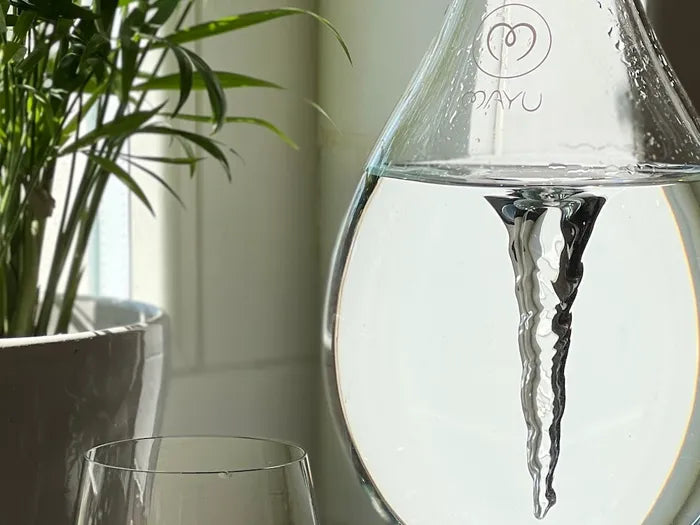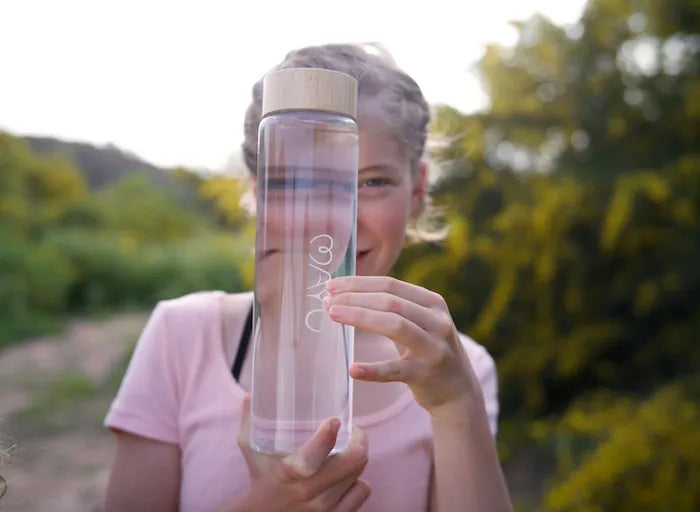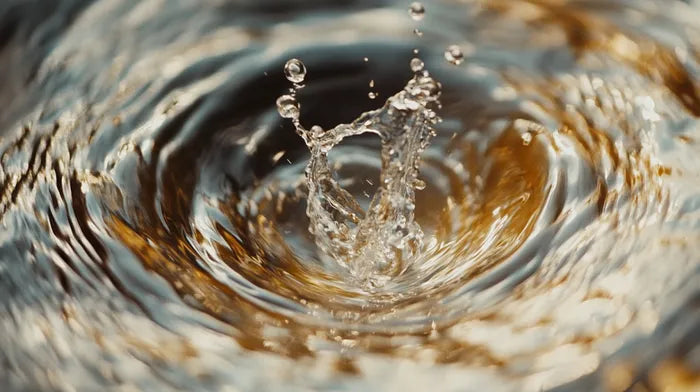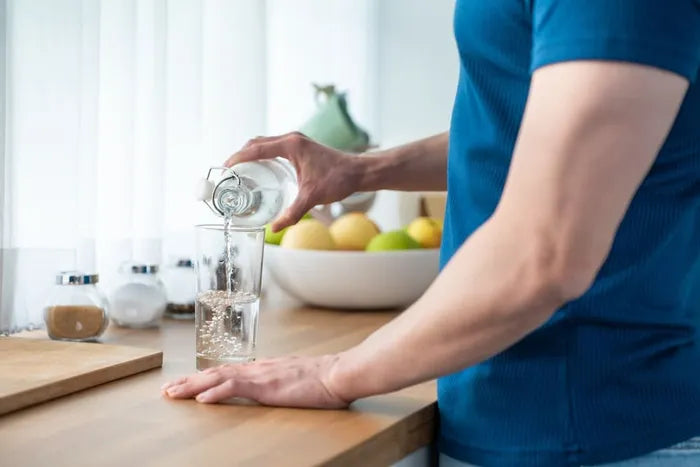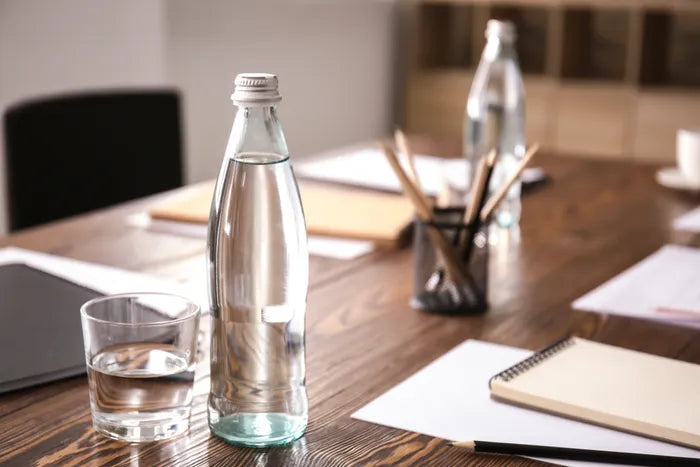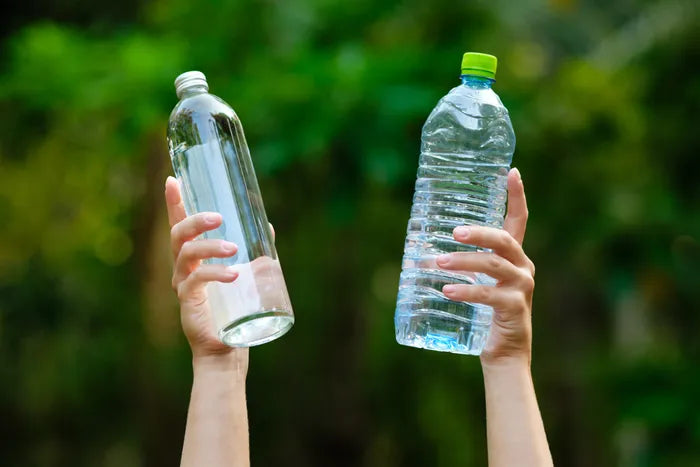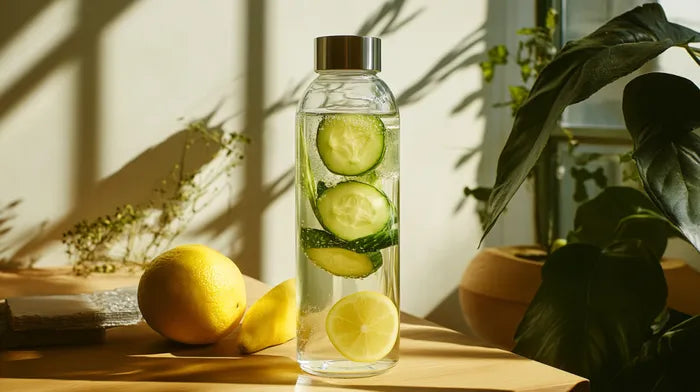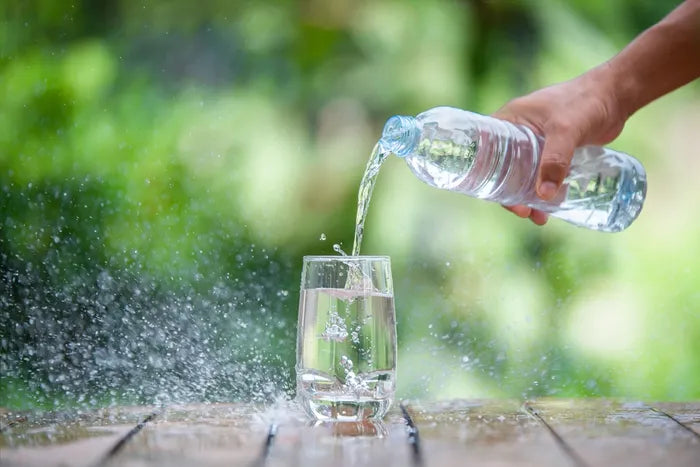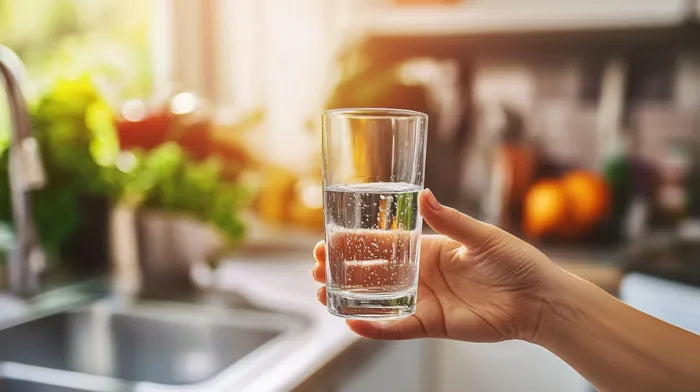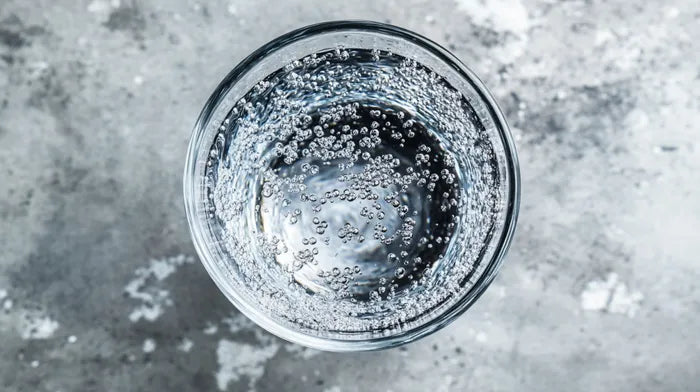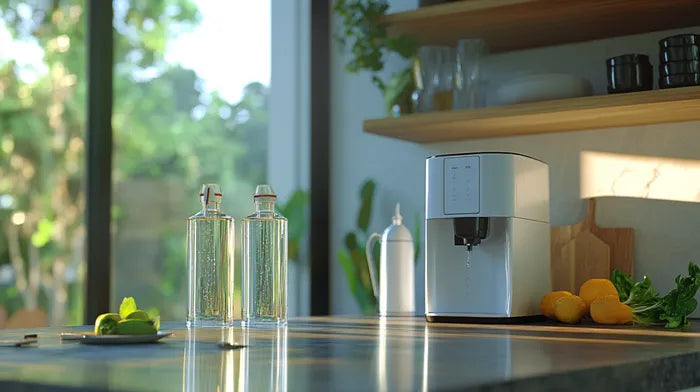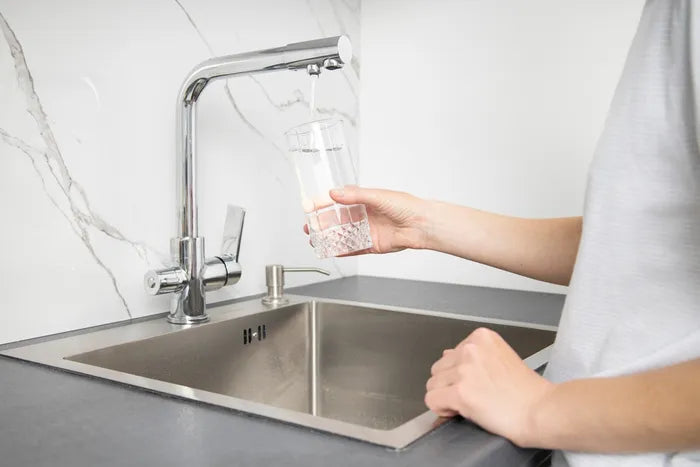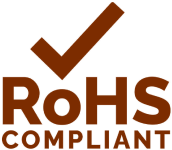Is Reverse Osmosis Purified Water Safe for You & Your Family?
RO systems remove toxic PFAS and other contaminants from tap water, but also strip out healthy minerals. You can make RO water safe for you and your family if you remineralize it and maintain the device properly.
Published June 2, 2025

Think your tap water is safe? New data from the Environmental Protection Agency shows that more than 158 million Americans—nearly half the country—have drinking water contaminated with toxic “forever chemicals,” known as PFAS (per- and polyfluoroalkyl substances) [1].
Linked to cancer, hormonal issues, and developmental delays, PFAS build up in the body. And you can’t see, smell, or taste them. Worse, they’re just one of many hidden threats in everyday tap water.
That’s why more families are turning to reverse osmosis (RO) systems, which promise to remove PFAS along with dozens of other harmful contaminants. But are they truly safe for everyday use, or are there hidden downsides?
Below, we’ll break down what RO systems really do, who needs them most, and how to use them wisely without risking your health.
Contaminants That Reverse Osmosis Removes
RO systems function like a super-fine strainer. They force the water through a membrane that catches nearly everything larger than a water molecule.
That means they:
- Eliminate heavy metals like lead, arsenic, and mercury that are linked to brain and kidney damage [2].
- Remove industrial pollutants and VOCs often found near factories and landfills [3].
- Filter out pesticide residues that seep into groundwater from nearby farms [4].
- Block PFAS ("forever chemicals"), which accumulate in the body over time [5].
- Destroy harmful microbes like bacteria, parasites, and viruses.
- Trap microplastics, now detected in 93% of bottled water [6].
- Reduce nitrates and chlorine byproducts, which are common in treated tap water but can be harmful in high doses [7].
These contaminants are far from rare. The U.S. Environmental Protection Agency links them to a wide range of health problems, from gastrointestinal infections to cancer and neurological issues [8].
The World Health Organization also warns that even trace exposure during pregnancy or early childhood can cause irreversible harm [9].
RO water limits or eliminates these risks entirely. It protects your family from both short-term illness and long-term toxic buildup. If your home's water supply is even slightly questionable, these filters serve as a safety net.
Who Needs RO Water the Most?
RO water isn’t just cleaner, it’s safer. And for certain people, that safety is non-negotiable. If any of these apply to your household, you should consider getting an RO system:
- You Live Near Farms, Factories, or Old Infrastructure: These areas often have chemical runoff, nitrate pollution, or lead pipes. And cheaper tap or pitcher filters can’t fix these problems [10].
- You Use a Private Well: Water from wells isn’t regulated. Even clear-looking well water may contain bacteria, iron, sulfur, or arsenic [11]. RO water is necessary here, since it's one of the few methods that can reliably handle these contaminants.
- You’re Caring for a Baby or Are Pregnant: A Developing immune system can’t tolerate chemical exposure. Nitrates and heavy metals can lead to birth defects or developmental issues [12].
- You Live With Someone Immunocompromised or Elderly: Any bacteria or viruses in drinking water can cause serious illness in these groups [13, 14]. RO water adds a layer of protection by removing them.
Note: The more vulnerable your family members are, the more critical clean water becomes. RO makes sure you're not gambling with their health.
Is Reverse Osmosis Water Good for Daily Use?
Here’s the part most people don’t hear up front: RO doesn’t just remove bad contaminants. It also takes out the minerals that are good for you [15]. When water is forced through an RO membrane, it loses essential minerals like:
- Calcium: Vital for strong bones and nerve signaling
- Magnesium: Needed for muscle function, blood pressure regulation, and energy use
- Potassium: Critical for heart health
- Iron: Essential for oxygen transport and immune support
The result? Very pure, but very empty water. It can be slightly acidic, too, which may disrupt your body’s pH balance if you drink it exclusively.
Over time, this can contribute to [16]:
- Mineral deficiencies
- Fatigue
- Weakened bones or teeth
- Increased risk of cramps or heart rhythm issues
RO water is only a complete solution if you replace what it takes out.
How to Replenish What RO Removes
1. Add Mineral Drops
Liquid mineral drops are one of the quickest and most flexible solutions.
- Look for high-quality, trace mineral supplements like MAYU Essential Minerals Drops.
- Choose blends that contain calcium, magnesium, potassium, and sodium—the four most commonly depleted by RO.
- Follow the exact dosage instructions. Over-mineralizing can be just as problematic as under-mineralizing.
- Avoid “flavored electrolyte drops” intended for sports drinks. They’re often high in sugar and not ideal for everyday water. Stick to flavorless, no-sugar drops.
2. Install a Remineralization Cartridge
Many newer RO systems now include a remineralization stage as a final filter.
- Look for systems like iSpring RCC7AK that have a post-filter cartridge that contains calcium carbonate, magnesium oxide, or coral calcium. These devices safely add back minerals and adjust pH.
- Make sure the cartridge is NSF-certified and compatible with your specific RO unit.
- Replace the remineralization filter every 6–12 months, depending on use and water quality.
3. Adopt a Mineral-Rich Diet
Food remains the most natural and consistent way to replenish minerals:
- Boost calcium with kale, bok choy, broccoli, canned salmon with bones, and fortified tofu.
- Get magnesium from pumpkin seeds, almonds, black beans, and spinach.
- Replenish potassium with bananas, sweet potatoes, avocados, and coconut water.
- Support iron intake with lentils, red meat, fortified cereals, and dark leafy greens.
Who Should Be Cautious with RO Water
Most people can safely drink RO water every day, especially with a balanced diet. But some groups may need to take extra steps or look for alternatives:
- Athletes and Active Teens: Sweat depletes sodium and magnesium. Without them, muscle cramps and fatigue set in faster [17].
- People With Cardiovascular Conditions: Potassium helps regulate blood pressure. Low intake may increase cardiovascular risk [18].
- Individuals With Gut Disorders: Poor absorption from food means you rely more on what’s in your water. RO water offers nothing in this case, so make sure to remineralize it to replenish what's lost.
- Those With Existing Mineral Deficiencies: Drinking RO without supplementation could make things worse. You should also make sure you're getting enough nutrients through your diet.
Why You Should Maintain Your RO System
Reverse osmosis systems aren’t “set it and forget it.” If filters or membranes are clogged, expired, or misused, you’re not getting clean water. Worse, you might be drinking water that’s been sitting stagnant in an unclean system.
Poor maintenance can lead to:
- Bacterial contamination
- Chemical buildup
- Leaching of metals like lead or chromium-6
- System failure
To keep your RO water safe:
- Replace pre-filters every 6–12 months
- Replace the RO membrane every 2–3 years (or as your system requires)
- Sanitize the tank annually
- Flush the system at setup and when stagnant
- Use a TDS meter to check filter performance
- Follow manufacturer schedules, not guesswork
So—Is RO Water Safe for Your Family?
Yes. Reverse osmosis water is safe, even for babies and the elderly, so long as the system is properly maintained and you're aware of mineral loss. It’s much safer than unfiltered tap water in areas with questionable supplies. And for households with health concerns, RO isn’t just safe, it’s smart.
If you’re ready to prioritize clean, contaminant-free water but want to do it responsibly, RO can absolutely be part of a healthy household setup. Just don’t forget: the cleanest water in the world still needs a few minerals to support a healthy body.
References:
- “Data summary of the fifth Unregulated Contaminant Monitoring Rule | US EPA,” US EPA, Jun. 02, 2025. Available: https://www.epa.gov/dwucmr/data-summary-fifth-unregulated-contaminant-monitoring-rule?mc_cid=d3343f9067&mc_eid=00f3044645
- M. N. Rana, J. Tangpong, and Md. M. Rahman, “Toxicodynamics of Lead, Cadmium, Mercury and Arsenic- induced kidney toxicity and treatment strategy: A mini review,” Toxicology Reports, vol. 5, pp. 704–713, Jan. 2018, doi: 10.1016/j.toxrep.2018.05.012. Available: https://pmc.ncbi.nlm.nih.gov/articles/PMC6035907/
- L. Zhang, G. Nian, J. Zhong, Y. Lin, and Y. Zhang, “Impact of volatile organic compounds in large municipal solid waste landfills on regional environment,” Waste Management, vol. 181, pp. 145–156, Apr. 2024, doi: 10.1016/j.wasman.2024.04.013. Available: https://pubmed.ncbi.nlm.nih.gov/38608529/
- “Pesticides in groundwater,” USGS, Oct. 09, 2018. Available: https://www.usgs.gov/special-topics/water-science-school/science/pesticides-groundwater
- “What's the deal with PFAS, aka 'forever chemicals'?,” News Center, May 09, 2025. Available: https://med.stanford.edu/news/insights/2024/07/pfas-forever-chemicals-health-risks-scientists.html
- N. McCarthy, “InFOGraphic: Study finds microplastics in 93% of bottled water,” Statista Daily Data, Mar. 16, 2018. Available: https://www.statista.com/chart/13255/study-finds-microplastics-in-93-of-bottled-water/
- “Disinfection by-products in drinking water: Occurrence, toxicity and abatement☆,” Journal of Environmental Pollution, Available: https://pubmed.ncbi.nlm.nih.gov/32889516/
- “Drinking Water Regulations | US EPA,” US EPA, Dec. 10, 2024. Available: https://www.epa.gov/dwstandardsregulations
- World Health Organization: WHO, “Drinking-water,” Sep. 13, 2023. Available: https://www.who.int/news-room/fact-sheets/detail/drinking-water
- H. Patton, L.-A. Krometis, E. Ling, A. Cohen, and E. Sarver, “Faucet-mounted point-of-use drinking water filters to improve water quality in households served by private wells,” The Science of the Total Environment, vol. 906, p. 167252, Sep. 2023, doi: 10.1016/j.scitotenv.2023.167252. Available: https://pubmed.ncbi.nlm.nih.gov/37742971/
- “Potential well water contaminants and their impacts | US EPA,” US EPA, Dec. 23, 2024. Available: https://www.epa.gov/privatewells/potential-well-water-contaminants-and-their-impacts
- D. M. Manassaram, L. C. Backer, and D. M. Moll, “A review of nitrates in drinking water: Maternal exposure and adverse reproductive and developmental outcomes,” Environmental Health Perspectives, vol. 114, no. 3, pp. 320–327, Nov. 2005, doi: 10.1289/ehp.8407. Available: https://pmc.ncbi.nlm.nih.gov/articles/PMC1392223/
- N. M. Ali, M. K. Khan, B. Mazhar, and M. Mustafa, “Impact of water pollution on waterborne infections: Emphasizing microbial contamination and associated health hazards in humans,” Discover Water, vol. 5, no. 1, Mar. 2025, doi: 10.1007/s43832-025-00198-x. Available: https://doi.org/10.1007/s43832-025-00198-x
- S. Bochynska et al., “The impact of water pollution on the health of older people,” Maturitas, vol. 185, p. 107981, Mar. 2024, doi: 10.1016/j.maturitas.2024.107981. Available: https://pubmed.ncbi.nlm.nih.gov/38555759/
- N. AlSawaftah, W. Abuwatfa, N. Darwish, and G. Husseini, “A Comprehensive review on membrane fouling: Mathematical modelling, prediction, diagnosis, and mitigation,” Water, vol. 13, no. 9, p. 1327, May 2021, doi: 10.3390/w13091327. Available: https://www.mdpi.com/2073-4441/13/9/1327
- S. Mulla and D. Singh, “Chemical analysis of drinking water to compare reverse osmosis processed and unprocessed water quality,” Environmental Disease, vol. 5, no. 3, p. 72, Jan. 2020, doi: 10.4103/ed.ed_21_20. Available: https://journals.lww.com/endi/fulltext/2020/05030/chemical_analysis_of_drinking_water_to_compare.3.aspx
- L. B. Baker, “Sweating Rate and sweat sodium Concentration in Athletes: A Review of Methodology and Intra/Interindividual Variability,” Sports Medicine, vol. 47, no. S1, pp. 111–128, Mar. 2017, doi: 10.1007/s40279-017-0691-5. Available: https://pmc.ncbi.nlm.nih.gov/articles/PMC5371639/
- “How too little potassium may contribute to cardiovascular disease,” National Institutes of Health (NIH), Oct. 31, 2017. Available: https://www.nih.gov/news-events/nih-research-matters/how-too-little-potassium-may-contribute-cardiovascular-disease
Disclaimer: The information published by MAYU Water is not a substitute for the expert knowledge, advice, and recommendations of trained professionals. We strongly recommend consulting with industry experts and primary or scientific sources before making any health, research-related, or other important decisions.
FAQs
Is RO water acidic?
Yes, reverse osmosis (RO) water is slightly acidic. This happens because the RO process removes minerals like calcium and magnesium that help buffer pH.
As a result, RO water typically has a pH between 5 and 6. While it's mildly acidic, it's generally safe to drink. Some people choose to add mineral drops or use a remineralization filter to restore pH balance and improve taste.
Can RO water cause constipation?
Not directly. But, because RO water lacks minerals like magnesium, it may contribute if your overall mineral intake is low. A balanced diet and proper hydration matter more.
Can RO water cause headaches?
Not usually. But if you drink only RO water and aren’t getting enough minerals like sodium or magnesium elsewhere, it could contribute to headaches in some cases.
Can RO water dehydrate me?
No, RO water won’t dehydrate you. It’s pure and hydrating, but since it lacks electrolytes, your body may benefit from added minerals if you're sweating a lot or on a low-mineral diet.
Is RO water safe for the kidneys?
Yes, RO water is safe for healthy kidneys. It's free of contaminants and helps with hydration. If you have kidney issues, talk to your doctor about your mineral needs, since RO water lacks electrolytes.












